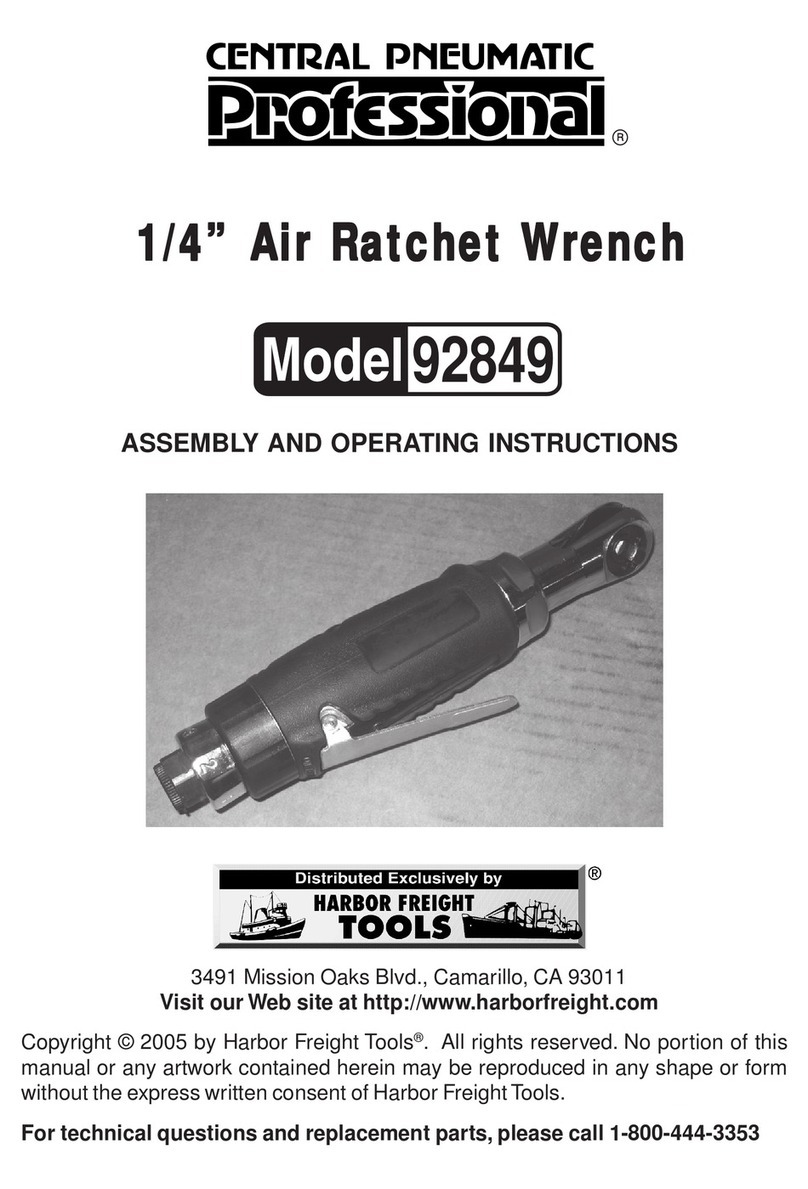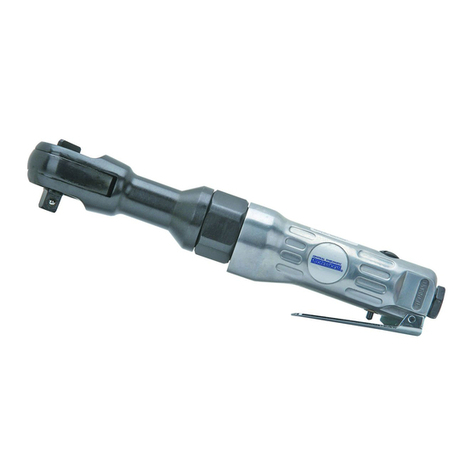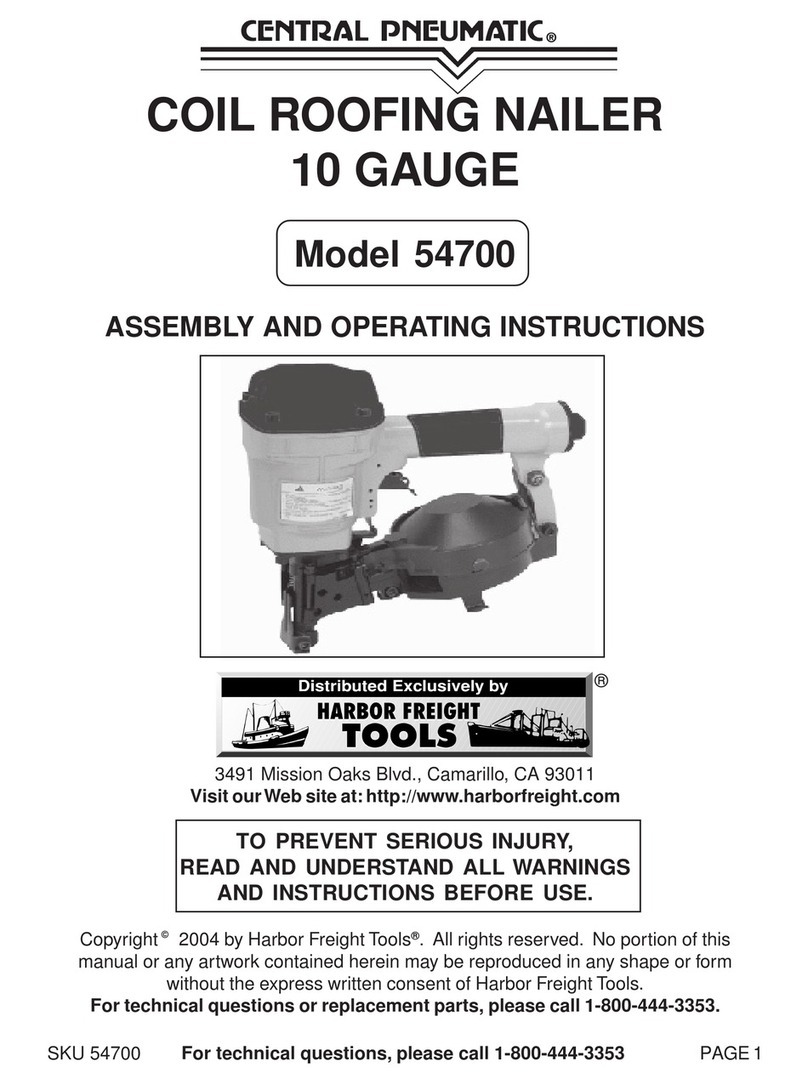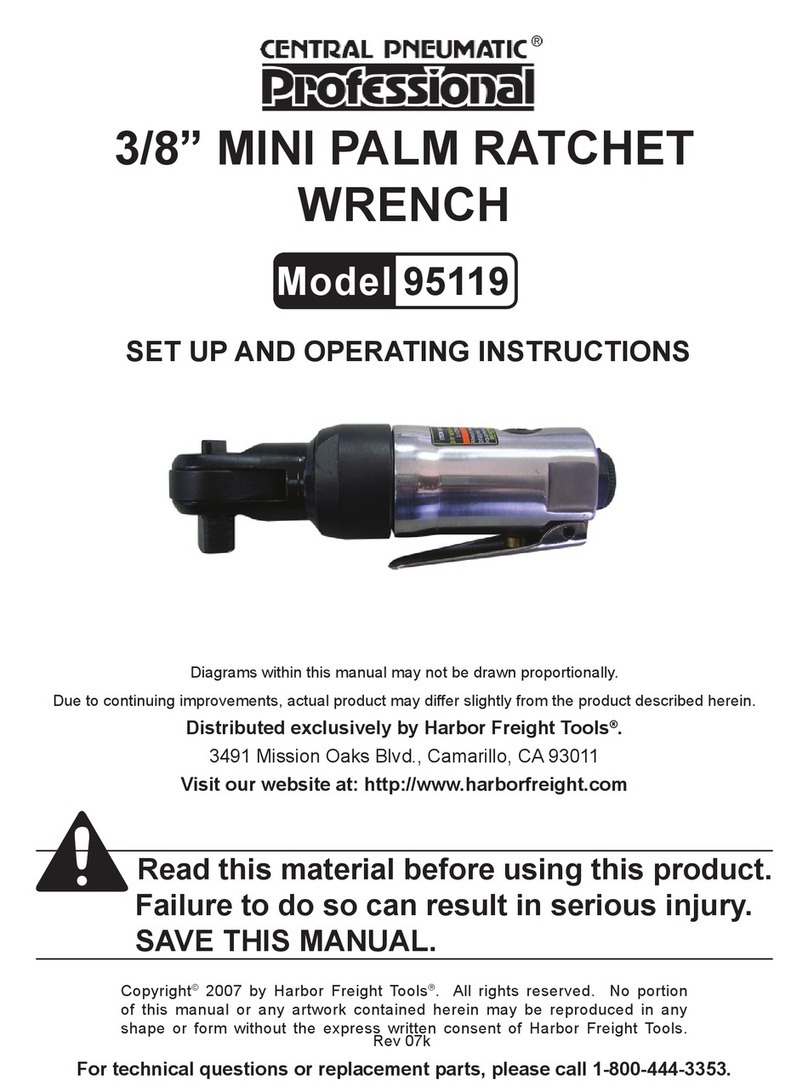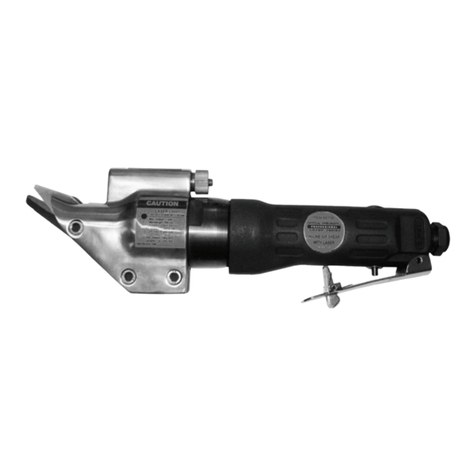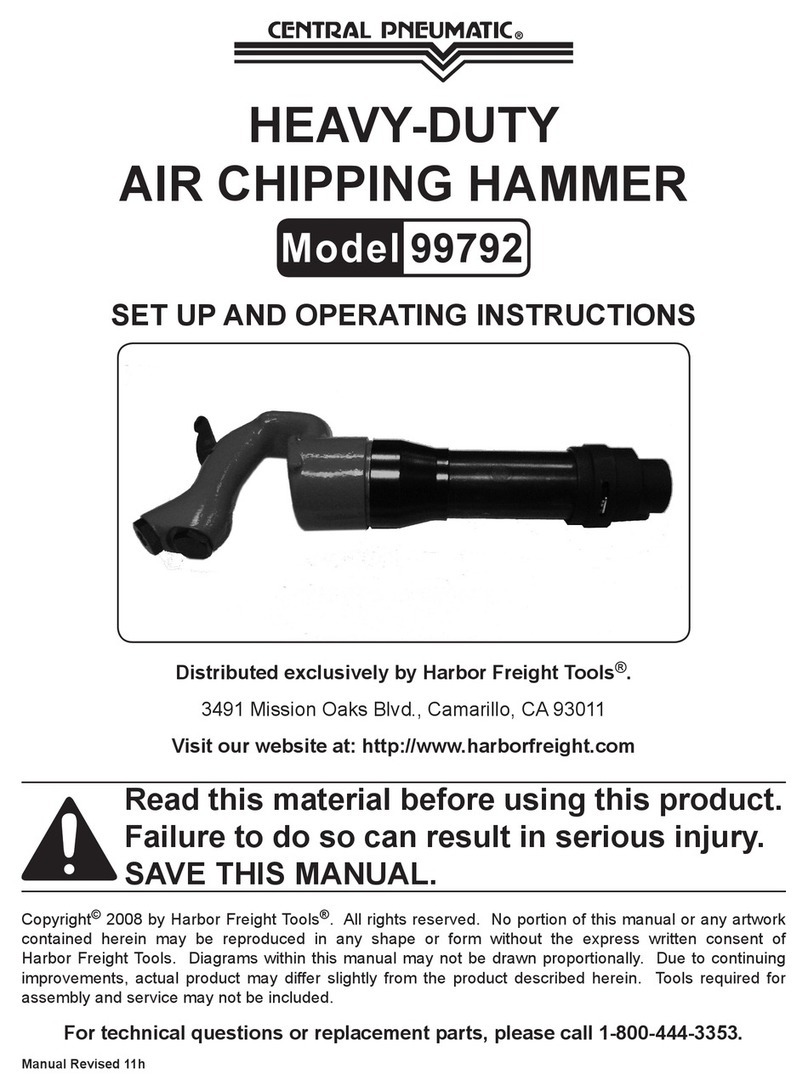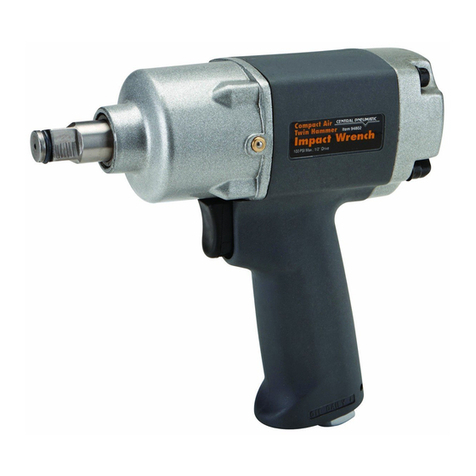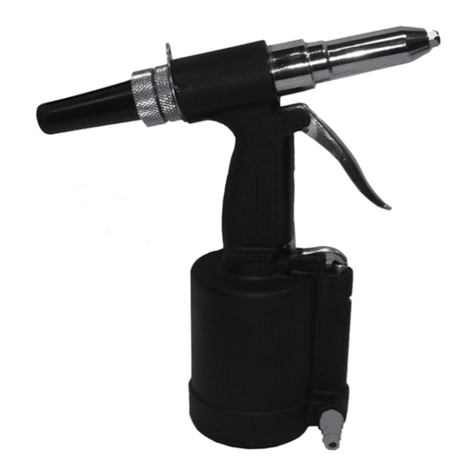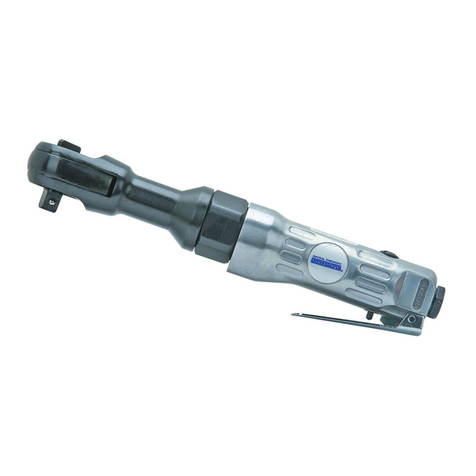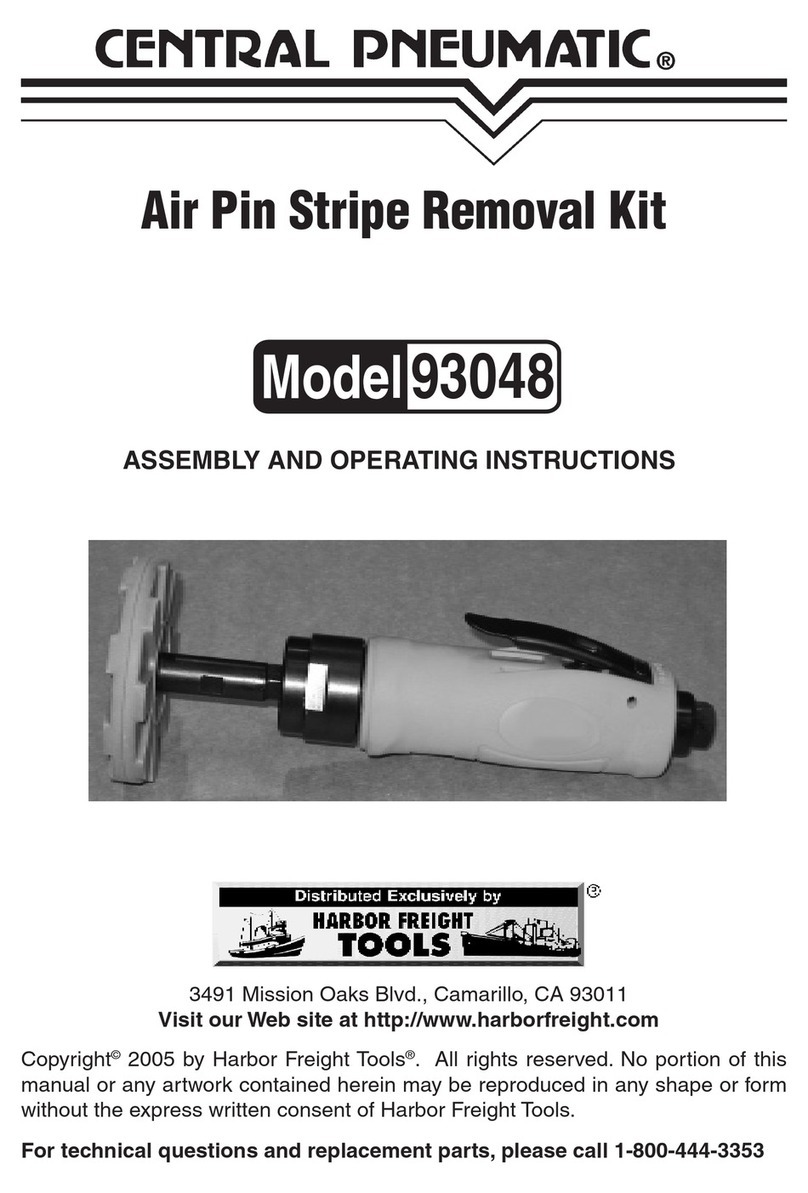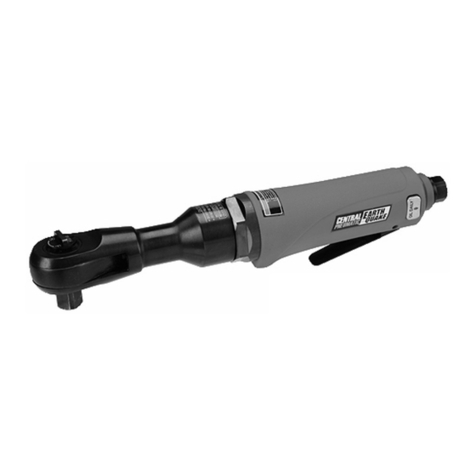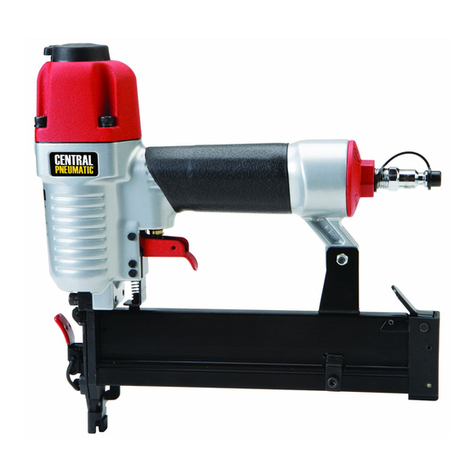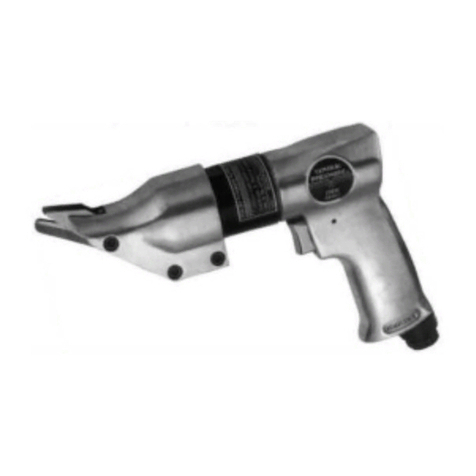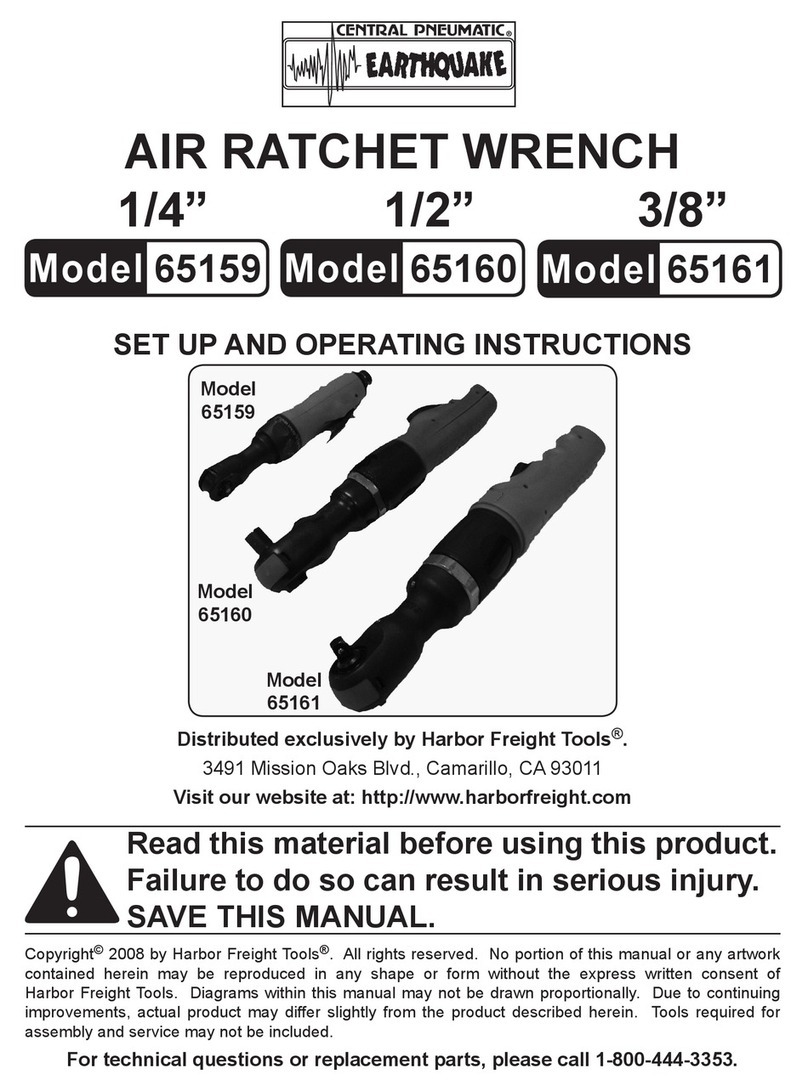
SKU 46446
For technical questions and replacement parts, please call 1-800-444-3353
Page 4
5. Use the right tool for the job.Do not attempt to force a small tool or
attachment to do the work of a larger industrial tool. There are certain
applications for which this tool was designed. It will do the job better
and more safely at the rate for which it was intended. Do not modify this
tool and do not use this tool for a purpose for which it was not intended.
6. Dress properly while working. Protect your skin from accidental abrasion
burnsbywearing tough long sleeves and safety gloves. Donotwearloose
clothing or jewelry as they can be caught in moving parts. Protective,
electricallynon-conductive clothes andnon-skidfootwearare recommended
whenworking. Wearrestrictivehair covering to contain long hair.
7. Use eye and ear protection. Always wear ANSI approved impact safety
gogglesandfullface shield when using this tool. WearanANSIapproveddust
maskorrespiratorwhenworkingaroundmetal,wood,andchemicaldustsandmists.
8. Do not overreach. Keep proper footing and balance at all times. Do not
reachoveror across running machines.
9. Maintain tools with care. Keep tools clean and in good condition for better
andsafer performance. Follow instructionsforlubricatingand changing
accessories.Inspecttoolfittingsandhosesperiodicallyand,ifdamaged,have
them repaired by an authorized technician. The handles must be kept clean,
dry, and free from oil and grease at all times.
10. Disconnect power.Disconnect from air pressure source when not in use.
11. Remove adjusting keys and wrenches. Check that keys and adjusting
wrenchesareremovedfromthetoolormachineworksurfacebeforeconnectingit.
12. Avoid unintentional starting. Be sure the throttle lever is in the Off position
when not in use and before attaching to pressure source. Do not carry any
tool with your hand on the throttle lever, whether it is attached or not.
Disconnect the air hose from the tool when not in use.
13. Stay alert. Watch what you are doing, use common sense. Do not operate
any tool when you are tired.
14. Check for damaged parts. Before using any tool, any part that appears
damaged should be carefully checked to determine that it will operate
properly and perform its intended function.Check for alignment and binding
of moving parts; any broken parts or mounting fixtures; and any other
condition that may affect proper operation.Any part that is damaged should
be properly repaired or replaced by a qualified technician.Do not use the tool
ifthethrottleleverdoes not function properly.
Brought to You by www.snapwhole.com
